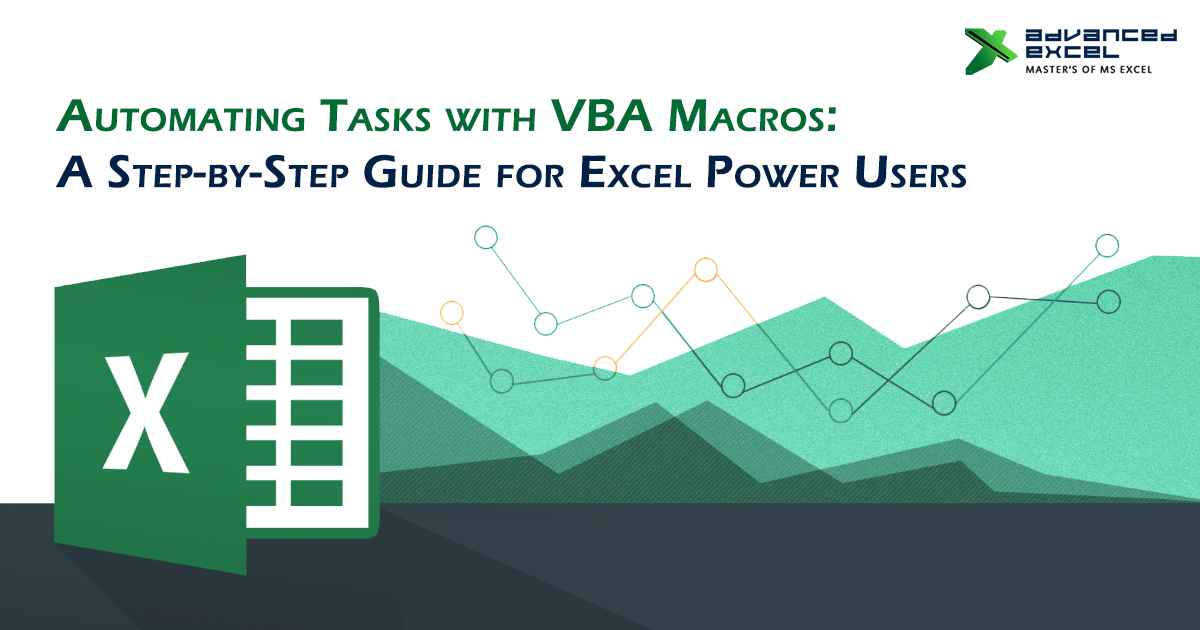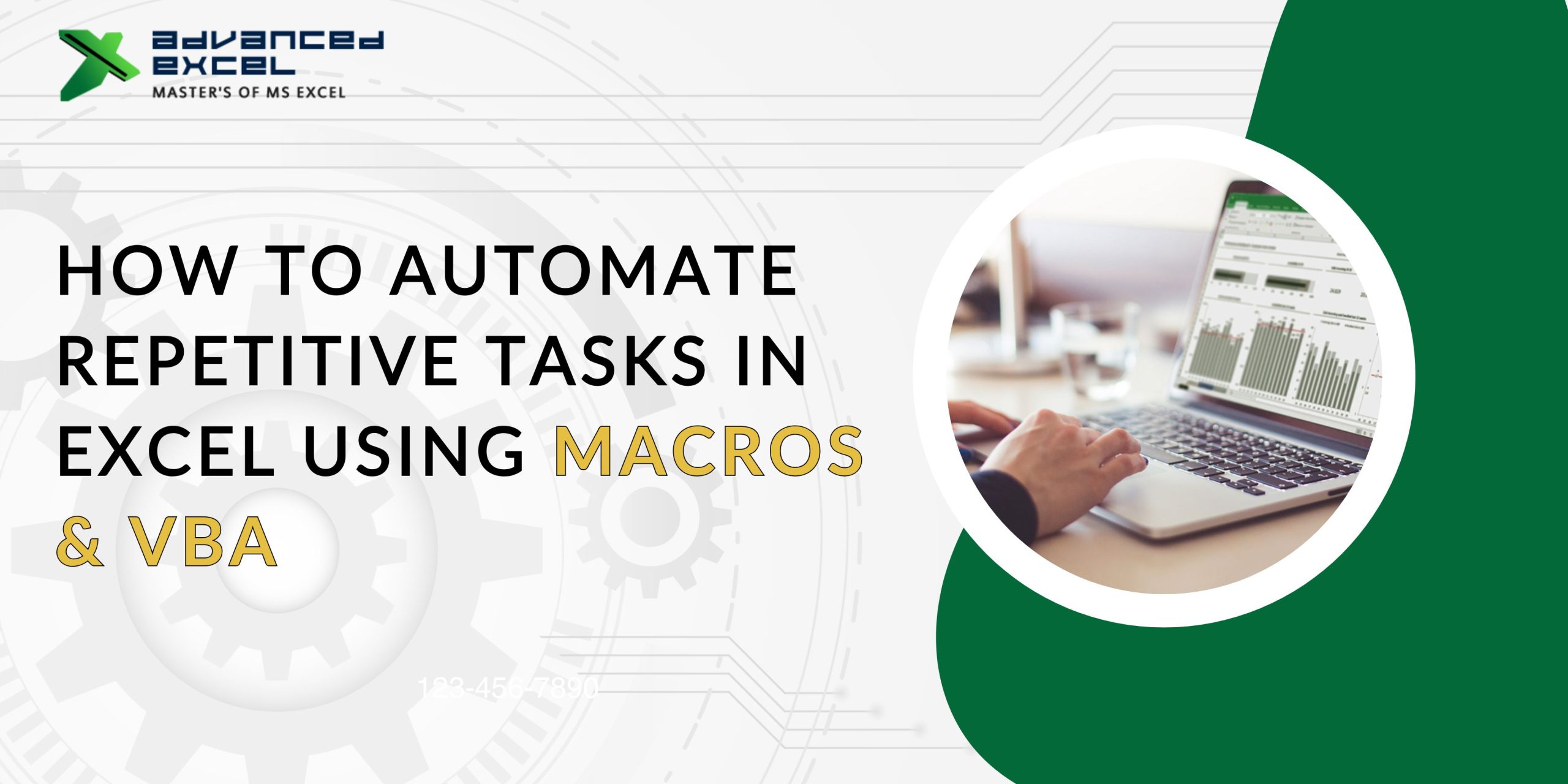In today’s fast-paced business world, there is an increasing demand for streamlining tasks and improving efficiency. Excel is a powerful tool that is widely used for data analysis, reporting, and other business functions. However, manually performing repetitive tasks in Excel can be time-consuming and prone to errors. VBA macros offer a solution to automate these tasks, saving time and reducing errors.
If you’re based in Gurgaon, you can enhance your Excel skills and learn how to create efficient and customized macros by enrolling in our VBA Macros training in Gurgaon. Our course covers everything from the basics of VBA programming to advanced techniques for writing efficient and error-free macros.
What are VBA macros?
VBA macros are a series of instructions that can be programmed to automate repetitive tasks in Excel. VBA stands for Visual Basic for Applications, which is a programming language used to create macros in Excel. Macros can be recorded and edited using the VBA editor, which is built into Excel.
Why use VBA macros in Excel?
Excel users can benefit from using VBA macros in several ways by enrolling in an Excel course in Gurgaon. Macros can automate repetitive tasks, reduce errors, and save time. Further, Macros can also be used to perform complex calculations and analysis, which would be difficult or time-consuming to do manually. Additionally, VBA macros can be customized to meet specific business needs, making Excel a more powerful tool for data analysis and reporting.
Setting up the Developer tab in Excel
Before creating a VBA macro, you need to enable the Developer tab in Excel. To do this, go to File > Options > Customize Ribbon, and then check the box next to Developer in the right-hand column. Click OK to save your changes, and the Developer tab should now appear on the ribbon in Excel.
Recording a macro in Excel
To record a macro in Excel, go to the Developer tab and click on the Record Macro button. Give your macro a name, and choose where to store it (in the current workbook or in a new workbook). Next, perform the actions you want to automate in Excel. When you’re finished, click on the Stop Recording button in the Developer tab.
Editing a macro in Excel
To edit a macro in Excel, go to the Developer tab and then click on the Macros button. Select the macro you want to edit, and then click on the Edit button. This will open the VBA editor, where you can view and edit the macro code.
Running a macro in Excel
To run a macro in Excel, go to the Developer tab and click on the Macros button. Select the macro you want to run, and then click on the Run button. The macro will then perform the actions that you recorded.
Assigning macro to a button in Excel
To assign macro to a button in Excel, go to the Developer tab and click on the Insert button. Choose the type of button you want to insert (e.g. a command button or a toggle button), and draw it on your worksheet. Right-click on the button and then choose Assign Macro. Select the macro you want to assign, and click OK.
Assigning a macro to a keyboard shortcut in Excel
To assign a macro to a keyboard shortcut in Excel, go to the Developer tab and click on the Macros button. Select the macro you want to assign, and click on the Options button. In the Shortcut key field, type the letter or number you want to use as the keyboard shortcut. Click OK to save your changes.
Saving a macro-enabled workbook in Excel
To save a macro-enabled workbook in Excel, go to File > Save As. Choose the location where you want to save the file, and then select Excel Macro-Enabled Workbook from the Save as type dropdown menu. Give your file a name, and then click to Save button.
Tips for writing efficient VBA macros
Here are some tips for writing efficient VBA macros in Excel:
- Use comments to explain your code and also make it easier to read and understand.
- Declare your variables to make your code more efficient and avoid errors.
- Use loops and conditional statements to automate repetitive tasks and save time.
- Use error handling to prevent your macro from crashing if it encounters an error.
- Furthermore, test your macro thoroughly before using it in a production environment.
Troubleshooting VBA macros in Excel
If you encounter issues with a VBA macro in Excel, here are some troubleshooting steps you can try:
- Check your code for errors or syntax issues.
- Make sure your macro is enabled in Excel.
- Check that your macro is assigned to the correct button or keyboard shortcut.
- Make sure your macro is compatible with the version of Excel you are using.
- Restart Excel and try running your macro again.
Common mistakes to avoid
Here are some common mistakes to avoid when working with VBA macros in Excel:
- Forgetting to save your macro-enabled workbook as a macro-enabled file type.
- Not declaring your variables, which can cause errors or slow down your macro.
- Not using error handling, which can cause your macro to crash if it encounters an error.
- Using hard-coded values instead of variables, which can make your macro less flexible and harder to modify.
- Not testing your macro thoroughly before using it in a production environment.
Examples for automating tasks in Excel
Here are some examples of VBA macros that can help you automate tasks in Excel:
- A macro to format a range of cells based on specific criteria (e.g. highlight cells that contain certain text or values).
- A macro to copy data from one worksheet to another based on specific criteria (e.g. copy all rows that contain a certain value in a specific column).
- A macro to create a chart based on data in a range of cells.
- A macro to send an email with data from an Excel worksheet.
- A macro to sort data in a range of cells based on specific criteria.
Simplify complex tasks with VBA macros in Excel
VBA macros can be a powerful tool for automating tasks in Excel and improving efficiency. By following the steps outlined in this guide, Excel power users can create and customize macros to meet their specific business needs. If you’re based in Delhi and want to take your Excel skills to the next level, consider enrolling in our Advanced Excel training in Delhi. Our course covers a range of advanced techniques for data analysis, reporting, and automation, including VBA macros.





